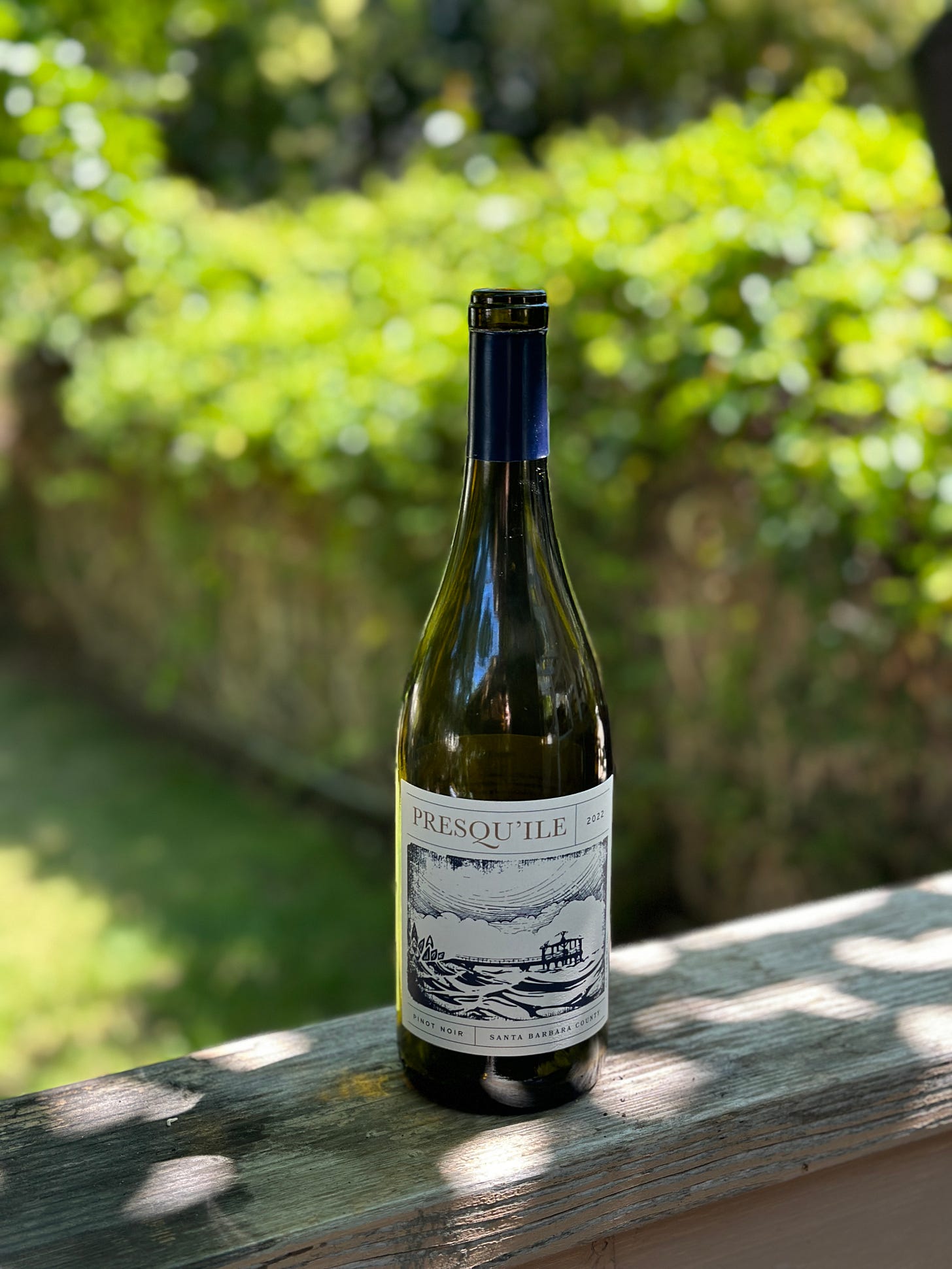Fires and Wine
With the recent Lake fire, and exploding Bridge and Line fires we look at how a natural (and more frequent) occurrence is upending wine.
We’re taking the opportunity this week to look at and reflect on the effect of the ever increasing threat of fires on wine. With fire season in full swing in California, we’re crossing our fingers once again everyone makes it out unscathed.
Fires and Wine
Harvest is officially in full swing, and along with it comes fire season here in California. As of this writing, we’re approaching 1 million acres burned this year. That's a fourfold increase from a year ago and well above the five-year average—with still months to go before winter hopefully dampens the landscape. It's a stark reminder of how vulnerable we are to Mother Nature in an industry already at the mercy of the elements.
Two key factors contributing to the increased frequency and severity of wildfires are rising global temperatures and insufficient forest management. In just a decade, from 2010 to 2020, the acreage burned in California jumped from 132,000 to a staggering 3.2 million acres. Unfortunately, many of these fires are happening near prime grape-growing regions, putting vineyards at risk.
Two of the most destructive wildfires in California’s history—the Atlas Fire in 2017 and the Glass Fire in 2020—both ravaged Napa Valley. They destroyed thousands of acres of vineyards and reduced numerous wineries to ashes. But the damage goes beyond the visible destruction of land and structures. One of the most severe yet often overlooked consequences of wildfires on the wine industry is smoke taint, an issue that can ruin entire vintages.
The Challenge of Smoke Taint in Winemaking
Smoke taint occurs as grapes begin veraison, the phase when they start ripening. Volatile chemicals in smoke bind to the grape skins, ultimately affecting the winemaking process and resulting in undesirable aromas and flavors in the finished wine. Wineries are often left with tough decisions: source grapes from unaffected regions, skip the vintage, or try to mitigate the smoke taint if it's not too severe. For example, after the Atlas and Glass fires, many Northern California wineries sourced fruit from the Central Coast, where the grapes remained largely unaffected.
The increasing intensity and frequency of wildfires raises an important question: What’s next for the California wine industry, and how can it adapt to this new reality?
Adapting to a New Reality
While it may seem that well-established wineries with deep pockets can weather these challenges, that assumption overlooks two critical points. First, the frequency of fires is stacking one smoke-tainted year on top of another, which can spell disaster even for financially secure wineries. Second, despite the perception of affluence, many wineries operate on thin margins. Compounding the problem are declining wine sales and an oversupply in the market, making it harder to absorb the costs associated with wildfire damage.
These pressures are leading many vineyard owners to rethink how they manage their land. While organic farming practices are highly valued, some landowners are reconsidering their strategies and are increasingly looking to methods like controlled burns to manage fire risks around their vineyards.
Controlled burns—deliberate, low-intensity fires—are a centuries-old technique used to clear dry, fire-prone vegetation. Our hope is that California will continue and even ramp up the use of controlled burns, reducing the risk of catastrophic wildfires. While eradicating wildfires altogether may be impossible, managing and mitigating them can become a new reality, especially in a state that continues to set new fire records every year.
Uncorked
Presqu’ile Pinot Noir
Coming from Presqu’ile’s Santa Maria vineyard, this Pinot Noir does an excellent job at representing the area with bright earthy notes. Preqsqu’ile focuses on cool climate wines and this wine is no exception. It’s on the lighter side of a Pinot Noir and pairs nicely with any type of BBQ poultry you want to grill up for the summer.
Nose: Vanilla, oak, cherry, earth
Palette: Mushroom, strawberry, cherry, raspberry
Pairs well with: BBQ poultry
Available at: El Rancho, bottle shop, most local Pavillions
What’s Happening
Harvest is here which means no shortage of events over the next couple months. Pick and choose wisely!
Brander Harvest Festival: Grape stomping, music, wine, and Argentine BBQ. What more could you want. Swing by Brander this September 14th for their harvest party with tickets costing $75.
Champagne Bergére tasting with Renegade Wines: Bubbles makes everything better. Taste through a range of Champagnes from the house of Champagne Bergére on September 24th. Call Renegade wines at 805-568-1961 to reserve your spot for $25.
Harvest Jubilee at Melville: Enjoy Melville’s 25th harvest Jubilee on September 28th for $75. BBQ, Wine, and Music.
Dragonette Wine Dinner: Enjoy the evening at Rare Society in Santa Barbara for a wine dinner tasting through Dragonette’s lineup of wines. Tickets cost $150 inclusive of meal and wine on October 17th.
Harvest Dinner at Easy Street Wine Company: With food from Clean Slate in Solvang, and multiple wineries pouring from the area, enjoy an evening celebrating harvest. The celebration takes place October 19th and tickets are $150.
Taste of Santa Ynez Valley: Again, one of the best events of the year to kick off harvest. From September 26th - 29th take your pick of events from wine dinners, tastings, or even ceramics classes for a custom wine glass. Tickets range from $35 to $150+ depending on the event.
Santa Barbara Vintners Festival: Celebrate Harvest at Vega Vineyard with one of the bigger parties of the year. Sample through more than 40 wineries, and try bites from more than 20 local restaurants. Tickets are $125.




